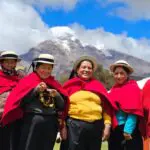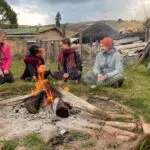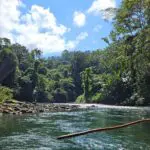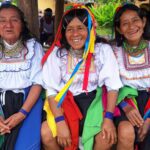Community-Based Tourism in Peru: A First-Hand Perspective
Our friend, the travel writer Naline Roodbeen, shares with us her Peru trip through both words and pictures. Here are some of the country’s highlights and how it is to live with local families.
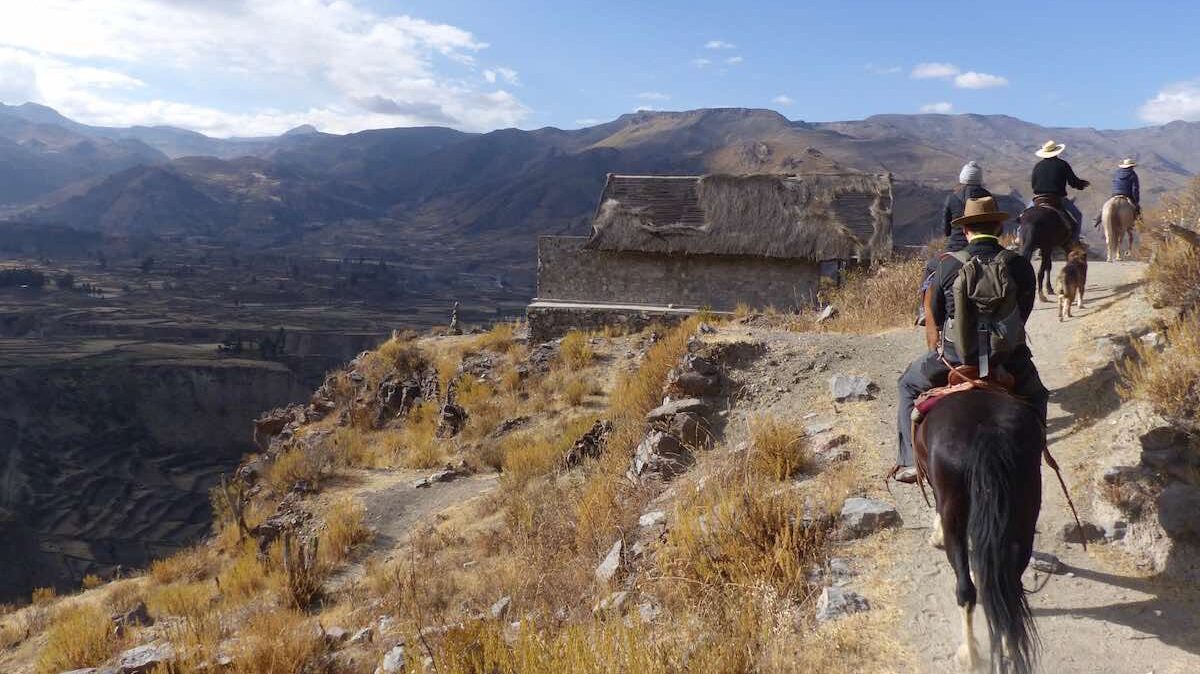
Have you ever wondered what you can do to travel more sustainably? I sure have. Long before traveling became part of my work as a travel writer, I visited many countries across the globe. With every journey, my love for travel grew, and so did my awareness of what tourism does to a country. When I first heard of something called Community Based Tourism, I knew it would change the way I traveled from then on. So, when work brought me to Peru earlier this year, I made sure to cross paths with RESPONSible Travel Peru. They understand this way of traveling like nobody else. With their help, I stayed in rural communities. I immersed myself in local Peruvian life in a way that I wouldn’t have been able to otherwise.
An Equal Exchange
A simple smile at the local market, a conversation in the park: to me, locals are the soul of a country. Through them, you get to experience a place in a way no luxury hotel or must-see landmark can exceed. Local communities, though, are usually the last ones to prosper from tourism. Waves of tourism spell perks such as employment, a steady income, and development and bring the challenges of pollution, environmental damage, and the commercialization of traditional culture. And so, I started to become more aware of the decisions I make while traveling. In every country, I looked for ways to interact with the local people, but I wanted to do that in a way that was equally interesting for them. And that’s where Community Based Tourism comes in. With this type of traveling, you directly contribute to a better life for locals while going off the beaten track and creating unforgettable memories with people you wouldn’t otherwise meet. When planning my trip to Peru, this brought me into contact with RESPONSible Travel Peru. They understand the importance of sustainable travel for the local people and contribute to a travelers’ experience. With their help, I included visits to two local communities in my Peru trip itinerary. This transformed two otherwise very touristy locations into sites offering unique experiences, highlights of my time in Peru.
The Coporaque Community in Colca Canyon
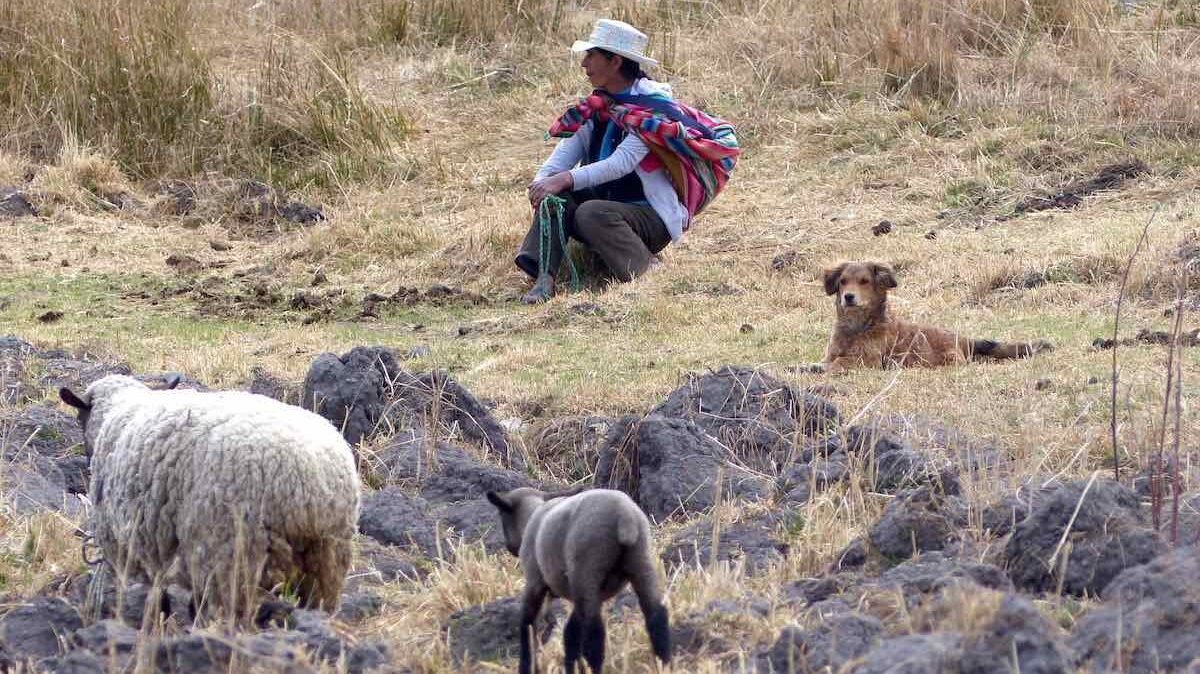
Tucked away in the vast landscapes of the Colca Valley lies the small rural community of Coporaque. It’s only seven kilometers from the touristy town of Chivay but a world away from the hustle and bustle of tour groups visiting the Colca Canyon. Upon arrival, I am welcomed by one of the four families who have opened up their hearts and houses to visitors from around the world. For three full days, I’m staying in a comfortable private room with a bathroom and enjoying the most delicious, homemade local dishes.
My hosts Fredy and Amanda take me on a walk to the secluded natural hot springs in the valley. During a horse ride with señor Chocolate, I enjoy the spectacular views from up the mountains. In the mornings, I am woken up by nothing but the sounds of nature and take in the views over the green terraces with glaciers and volcanoes in the distance. When walking around the small town, I am greeted by locals and waved at by school kids while sheep and alpacas cross the dirt roads. After three nights, I’m having a hard time leaving this tranquil place and its friendly people. When I continue my journey towards Cuzco, I pass by Chivay with its streets full of hotels and traffic jams of tour buses. I am even more grateful for having experienced this slice of Peru, so far removed from mass tourism. Even though we had only just met and probably will never meet again, these people truly made me part of their families. They shared personal stories about their lives that have given me a new understanding of Peru, accounts that will, for sure, l travel with me for a very long time.
Titicaca Lake, Away From the Crowds
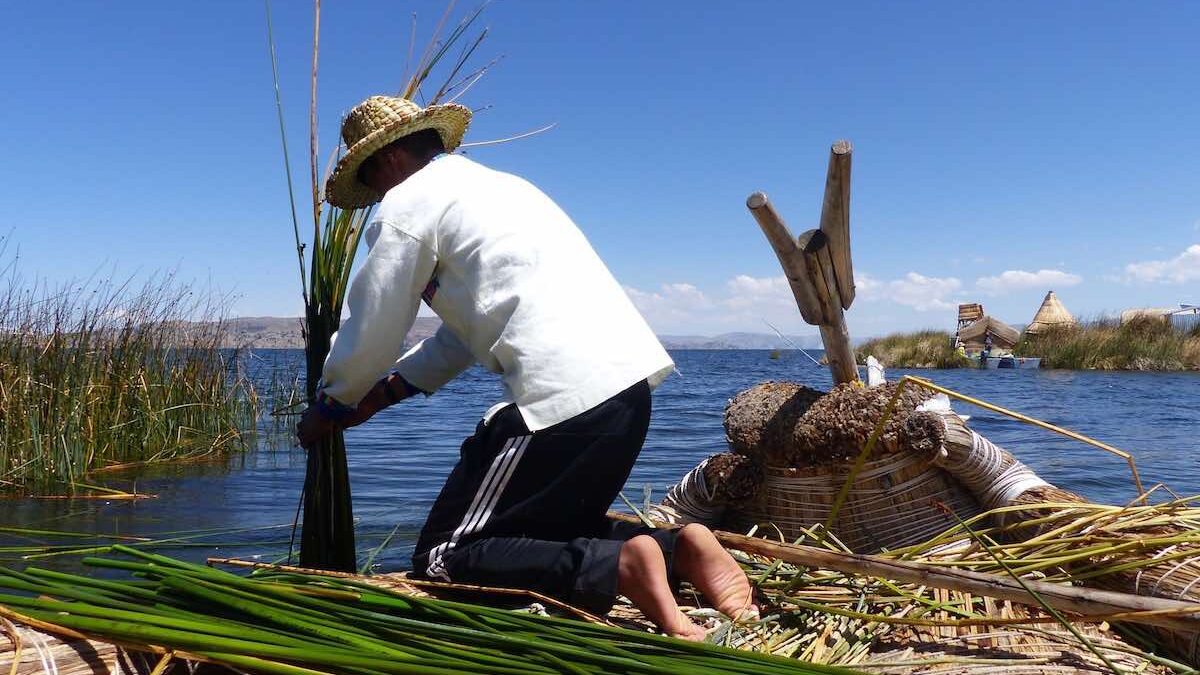
After spending some time in Cuzco and admiring Machu Picchu, I make my way to Titicaca Lake to visit my second local community. Nestled between Peru and Bolivia, Titicaca Lake stretches out over more than 8000 square kilometers, at an altitude of nearly 4000 meters, making it the highest navigable lake in the world. With the beauty of the lake, its many myths, and the presence of native communities came the tourists. Something impossible to ignore when I arrive in the large lakeside city of Puno. Wherever I look, I see advertisements to visit the famous floating islands. The hotel receptionist tries to convince me to book one of the day tours to call them, but I already have my own plan. I’m smiling, thinking about the stories I heard from the RESPONS team about what is awaiting me for the next couple of days.
Most tourists looking for something time and cost-efficient fall for the easy day trips that take you to the most popular attractions nearby. Luckily I was warned that these tours are a somewhat staged experience deprived of all authenticity. The real Titicaca Lake experience awaits you a little further out, where the native Uros (Uru in Aimara ) people are actually still living on their floating cane islands. Rarely seen by tourists, the Uros people are happy to tell you about their special way of life here. So the following day, a boat takes me from a small port on the Capachica peninsula to one of the islands. The next couple of hours are amongst the best of my entire Peru trip. I listen to the history of the Uros people and to my surprise I am told that we are the first tourists they have seen in a week. Within minutes they call me their friend and I spend my time watching how ladies in the most beautiful dresses prepare dinner. I play with toddlers crawling around the tiny island and curiously ask one of the young men questions about his life on this extremely tiny piece of land. While the boat sets course to my next destination, my mind is still processing the unreal scenes I have just witnessed: a life so far from my own or from anything I have read about in the travel guides.
Just before sunset, I arrive in the community of Chifrón, located high up a cliff overlooking the lake and the nearby beach, and there awaits Inti Wasi. It is the house of Walther and Mariela and their two young kids. They opened a homestay out of a love for rural life and want to share it with travelers looking for a more authentic and tranquil experience. That night, over a delicious dinner, we talked about life in this part of Peru and tourism development. With more and more concrete buildings popping up in the area, it is more important than ever to support small-scale, family-run businesses that help tourism around Titicaca Lake. This way, the region can become sustainable, with respect for the environment, culture, and life of the native people.
Back to Basics?
The word homestay is often associated with fundamental conditions, but I found staying with a local family surprisingly comfortable, as opposed to what many people think. I spent my nights in cozy private rooms with bathrooms and experienced how the families go out of their way to make you feel at home. A big part of this experience is the local food, often made with organic ingredients from the area. At Inti Wasi, I enjoyed fresh fish from Titicaca Lake. In Coporaque, I tried my first alpaca meat prepared according to a special family recipe. Be aware that you are not checking into a hotel, though: forget the amenities, mini bar, and big fluffy towels. But you can probably do without those for a night or two, can’t you?
And whether you are fluent in Spanish or need to get creative to have a conversation, you will leave your host family with a new understanding of Peruvian life and will have offered much to them in return. In the words of host Rocío in the community of Coporaque: “We have received visitors from all over the world. It has taught us many things about foreign cultures. What I love most about welcoming people into my house is that I can share our culture and traditions and in return get to see how my children learn about life outside of our little community.” And this is precisely what Community Based Tourism is all about: a fair and sustainable exchange where both parties benefit equally.
Immerse Yourself
So, does all of this mean that you will always travel just like a local? No, I don’t think so. The more, the better, of course, but no tourist travels in a 100% responsible way, and that’s okay. Enjoy that luxury hotel with a rooftop pool and epic breakfast buffet. Indulge in a culinary experience in one of the world-renowned restaurants in Lima (real bucket list material!) and visit all the famous must-sees along the way. But just like RESPONSible Travel Peru suggested to me: take some days during your holiday to go for that detour, end up amongst the locals and immerse yourself in Peruvian life. It will be worth it for you and for the locals.
If you’re now hoping to immerse yourself in the local way of life, while enjoying a holiday of a lifetime like Naline did, do not hesitate and get in contact with us, we have plenty of choices to offer as we work hand in hand with more than seventy different communities across the country. One of our travel designers will get in contact with you and get to know a bit about you, so together we will be able to plan your perfect, 100% tailor-made itinerary. Fill out our brief questionnaire and you’ll have taken the first step towards your ideal trip to Peru.

